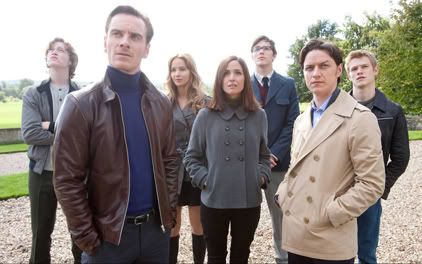
Terrence Malick's existentialist experiment The Tree of Life triggered walkouts, exasperated sighs, and confused chatter. I loved every minute of it, but it's easy to sympathize with an unprepared audience. Imagine it: half an hour into an otherwise grounded '50s family drama, the universe is born. Their confusion was understandable, but their rudeness was less forgivable — I had to tell two whispering women behind me to curb their incessant chatting. With the shuffle of shopping bags, they not only obliged, they left.
Though not particularly fair, it's easy to defend Tree of Life and condemn their reaction in the greater context of Malick's body of work. I don't know what contingent of the crowd had had exposure to the filmmaker, or consequently arrived as preconditioned to his introspective narrative stylings as I had. I'd venture a guess that a few of the least satisfied patrons likely hadn't even seen the trailer. But if Tree of Life is only a great film if you've already seen Days of Heaven and The Thin Red Line, then it isn't a great film.
The Tree of Life is great, but it will bewilder and bore an audience unwilling to entertain Malick's bizarre tangents. I don't pretend to understand exactly what the filmmaker is suggesting with each visual cue, but at their most visceral level, the images are appreciable as pure visual poetry. And written in the firestorm of newborn planets, Malick finds awesome beauty in the smoldering foundations of Earth, and the burgeoning life of our progenitors.
Opinion will doubtless hinge on this outstanding segment, but in truth Malick's trip to the planetarium isn't an especially significant aspect of the story. The birth of our world is an important prologue, but the director is more interested in comparably recent history. Sean Penn plays a modern man. Stuffed into a business suit and entombed in a monolithic glass office, he reflects on his upbringing with his parents and two brothers. With no conventional narrative to speak of, he's left grasping at an odd assortment of memories and feelings.
First steps, family suppers, neglected chores. The genius of Malick's film is playing these little moments on a galactic scale. Consider it this way: we meet a family with all the requisite triumphs and tragedies. Been there, done that. By pausing their story to illuminate the incalculably vast and random series of events that made possible their microscopic lives, the filmmaker gives us a new perspective on the size of even their shortest shortcomings. Juxtaposed with the unending expanse of the universe, the infinitesimal experiences that chip away and eventually shape their characters are monumental.
And then you've got the nuts and bolts of Malick's filmmaking. Gorgeously shot by Emmanuel Lubezki and backed by Alexander Desplat's emotive score, The Tree of Life deftly marries sight and sound with a Kubrickian flair that recalls the director in top form. It remains to be seen whether Malick's oeuvre will have the lasting impact Kubrick's did, but the two are alike foremost in their uncompromising commitment to their craft.
Tree of Life, like 2001: A Space Odyssey, is a big film. Its ideas are expansive, provocative, and timeless. As was demonstrated at the Cannes premiere and in my theater Saturday, the price of that intellectual ammunition is accessibility. This is not a film for everyone. It's not a film that conventionally entertains. What Malick attempts to elicit from his viewers is infinitely more valuable than endorphins — a reverie for life itself and empathy for mankind. It must have worked, I feel sorry for those walkouts.
4.5/5







